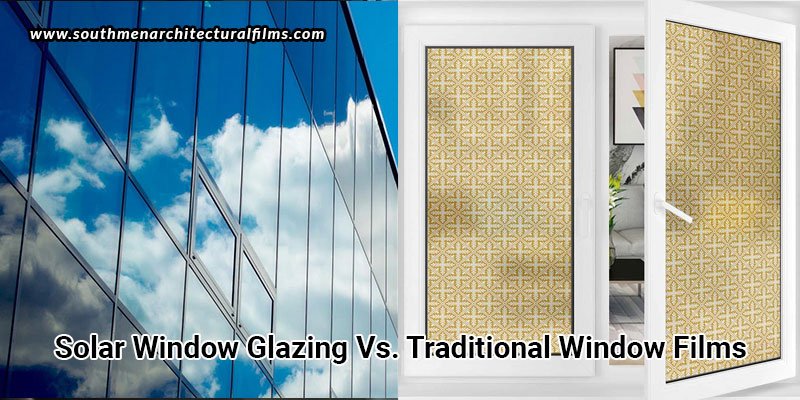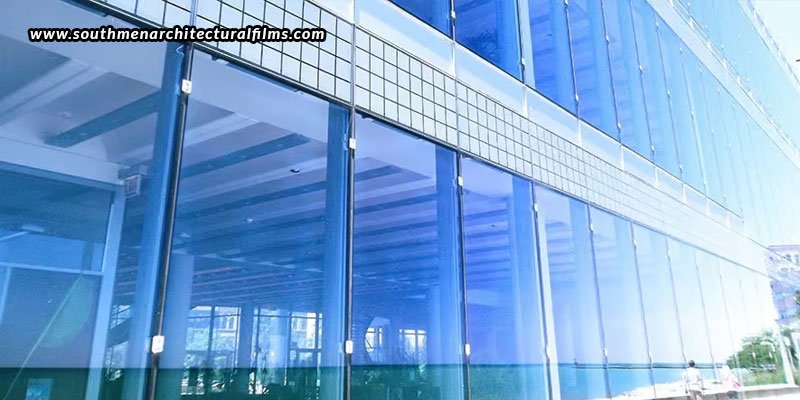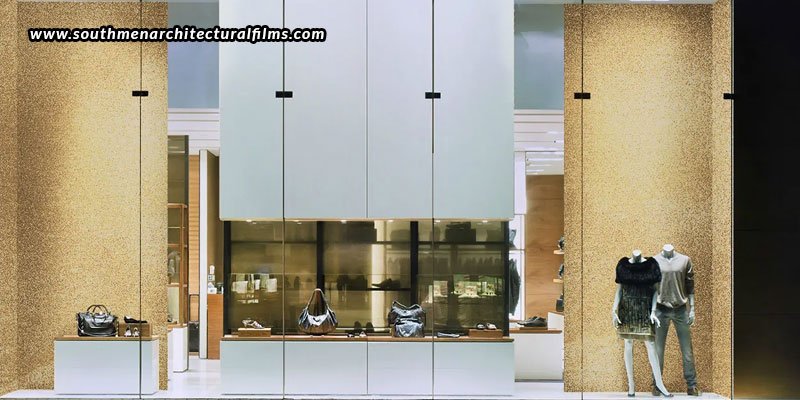Property owners are looking for ways to make their residences and places of business more environmentally friendly without compromising on style or usefulness as the movement towards energy efficiency and sustainable building practices gains pace. Traditional window films and solar window glazing are two common ways to lower solar heat gain and increase energy efficiency. Although the goals of both systems are to reduce energy expenditures and increase indoor comfort, there are several key differences between them in terms of performance, durability, materials, and installation techniques. To assist you in making the best decision for your needs, this blog will compare solar window glazing with conventional window films, highlighting energy efficiency, affordability, and aesthetic appeal.
Solar window glazing vs. traditional window films
Solar window glazing is an advanced glass solution that incorporates solar control coatings during its manufacturing process. These coatings, typically made from metallic oxides, reflect or absorb solar radiation, reducing heat transfer and improving indoor temperature regulation. This results in greater energy efficiency by minimizing heat gain in summer and heat loss in winter, leading to lower heating and cooling costs. Solar window glazing also allows natural light to pass through while blocking infrared radiation, providing optimal lighting without excessive heat. Additionally, solar glazing is highly durable and designed to last for decades, requiring minimal maintenance and offering various tints and finishes that enhance modern, sleek architectural designs.
Traditional window films are adhesive materials applied to existing windows, designed to reduce glare, block UV rays, and reflect heat. While they provide energy savings by lowering solar heat gain, traditional films are generally less effective than solar glazing in regulating year-round temperatures. Window films are more affordable and easier to install, making them a practical choice for retrofitting windows, but they degrade over time and may need replacement every 10 to 15 years. Aesthetic options are vast, with films available in different tints and patterns, though lower-quality films can bubble or peel, affecting the overall appearance.
Energy efficiency
Solar window glazing is more energy-efficient than other window film types. Solar glazing’s integrated coatings are designed to maximize thermal insulation while letting in plenty of natural light. Solar glazing lowers the need for heating in the winter and air conditioning in the summer by reflecting infrared radiation, or heat, and minimizing UV penetration. Conversely, traditional window films can also increase energy efficiency, although their thermal performance is not quite as effective as that of solar glazing. Although window films are capable of reflecting an extensive amount of solar energy, their benefits are generally more pronounced in the summer and less apparent in the winter. In summary, solar glazing performs well in both summer and winter and offers higher year-round energy savings, whereas typical window coatings work best in warmer climates to reduce heat gain and are less efficient in colder climes.
Cost-effectiveness
Solar window glazing is more expensive up front because it calls for replacing current windows with specially treated glass. The type of glazing selected, the quantity of windows that need to be replaced, and the difficulty of installation all affect the final cost. Even while installing solar glazing costs more, over time the savings on energy bills may make it more affordable. Solar glazing consistently saves energy because of its higher thermal efficiency, which lessens the strain on HVAC systems throughout the year. When it comes to standard window films, their installation is significantly less expensive because they don’t call for changing the glass. Rather, the film is applied to the already-existing windows, saving money on labour and supplies. Traditional window films provide average savings, especially in warm climates with expensive air conditioning. Nevertheless, these films might not provide the same long-term energy savings as solar glazing because they often do not increase thermal insulation throughout the winter.
Aesthetic appeal
Traditional window films and solar window glazing both provide a variety of design possibilities, but their aesthetic functions differ. Generally available in clear, tinted, or low-reflective finishes, solar window glazing enables architects and homeowners to choose a design that complements the building’s exterior without changing the building’s appearance. Solar glazing complements modern architecture while preserving the smooth, polished appearance of glass. Traditional window films offer better customization options in terms of design. These films come in a range of hues, designs, and sheen levels, enabling property owners to accomplish particular aesthetic objectives like improving seclusion, producing ornamental effects, or mirroring windows. Nevertheless, with time, window films may develop flaws like bubbles or peeling, which can detract from their overall aesthetic appeal.
Installation
Since the glass for solar window glazing needs to be custom-manufactured and placed throughout the building or restoration process, professional installation is required. Although replacing old windows can be inconvenient and time-consuming, the long-term benefits of increased energy efficiency make the investment worthwhile. Professionals or do-it-yourselfers can apply traditional window films to windows that already have them installed because they are comparatively simple to install. Because window films are easy to apply, they’re a more accessible and cost-effective choice for instant energy savings.
Maintenance
Solar window glass is incredibly strong and low-maintenance. The coatings don’t have the potential to peel or bubble because they are integrated into the glass, so the windows will continue to look and function well for many years. Traditional window films are less resilient and might need to be replaced every ten years or so. Weather and sunshine might cause them to deteriorate, so they might need to be reapplied. Additionally, more frequent cleaning may be necessary to keep films clear and free of streaks.
Environmental impact
Both solar window glazing and traditional window films can reduce energy consumption, thereby lowering the carbon footprint of a building, but the installation of solar window glazing is a long-term fix that offers steady annual energy savings. Solar glazing usually has a bigger initial environmental impact during production and installation, but over time, its energy-saving capabilities and longevity make it a sustainable option. Because traditional window films are easier to manufacture and install, they have a lower initial environmental impact, but over time, they contribute to more waste because of their lower lifespan and the necessity for regular replacement.
Which one should you choose?
Both solar window glazing and traditional window films have advantages when compared, depending on the particular requirements of the structure. Solar glazing is the best option for individuals searching for a long-lasting solution in sustainable design because of its superior long-term energy efficiency, robustness, and year-round performance. On the other hand, traditional window films are a more accessible and reasonably priced way to increase energy efficiency without having to undertake significant remodelling. The decision ultimately comes down to your long-term sustainability objectives, your budget, and the windows that you want to cover.
Generally, Southmen solar window glazing in Jayanagar is the best option for long-term energy efficiency and durability in new construction or substantial upgrades. Although there is a large upfront expense, the increased comfort and energy cost benefits make it worthwhile. On the other hand, for upgrading existing windows on a budget, traditional window films offer a cost-effective and quick method to improve energy efficiency. Although these films are not as long-lasting or comprehensive as solar glazing, they still have a considerable advantage, especially in hot climates where it is crucial to reduce solar heat intake.




